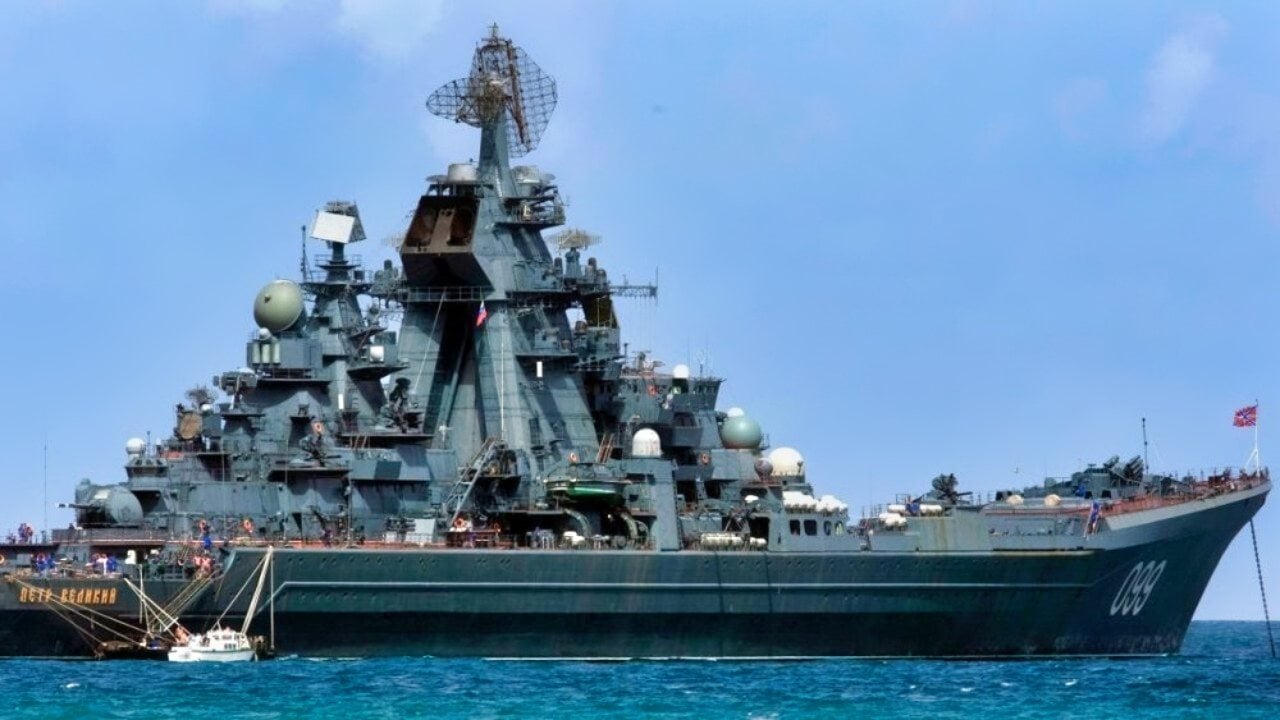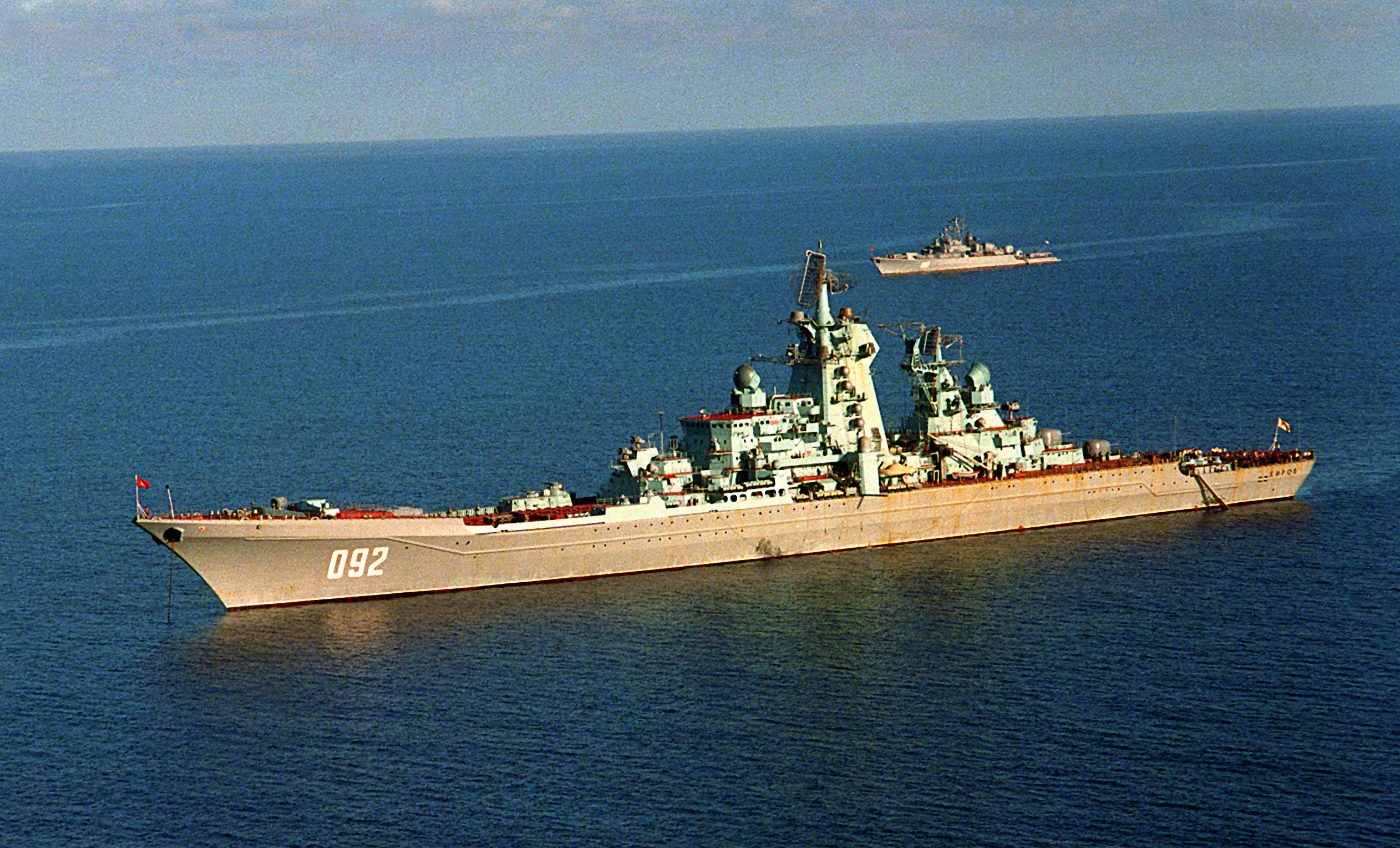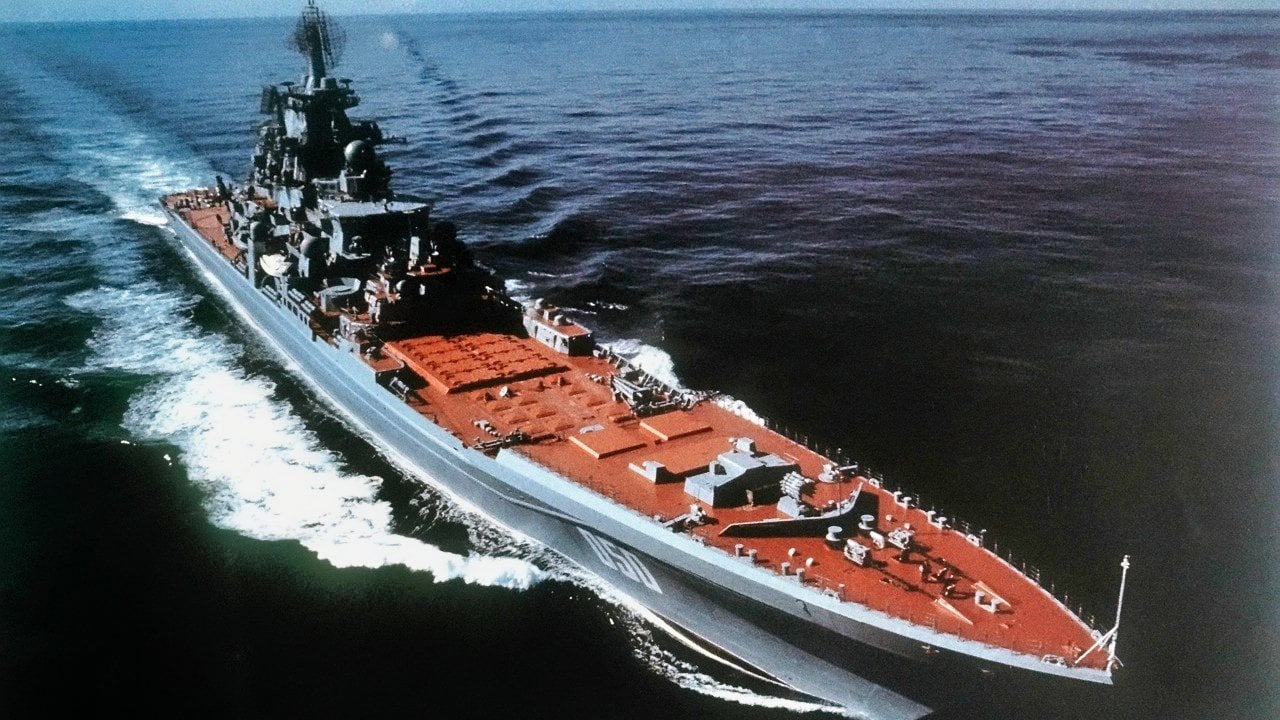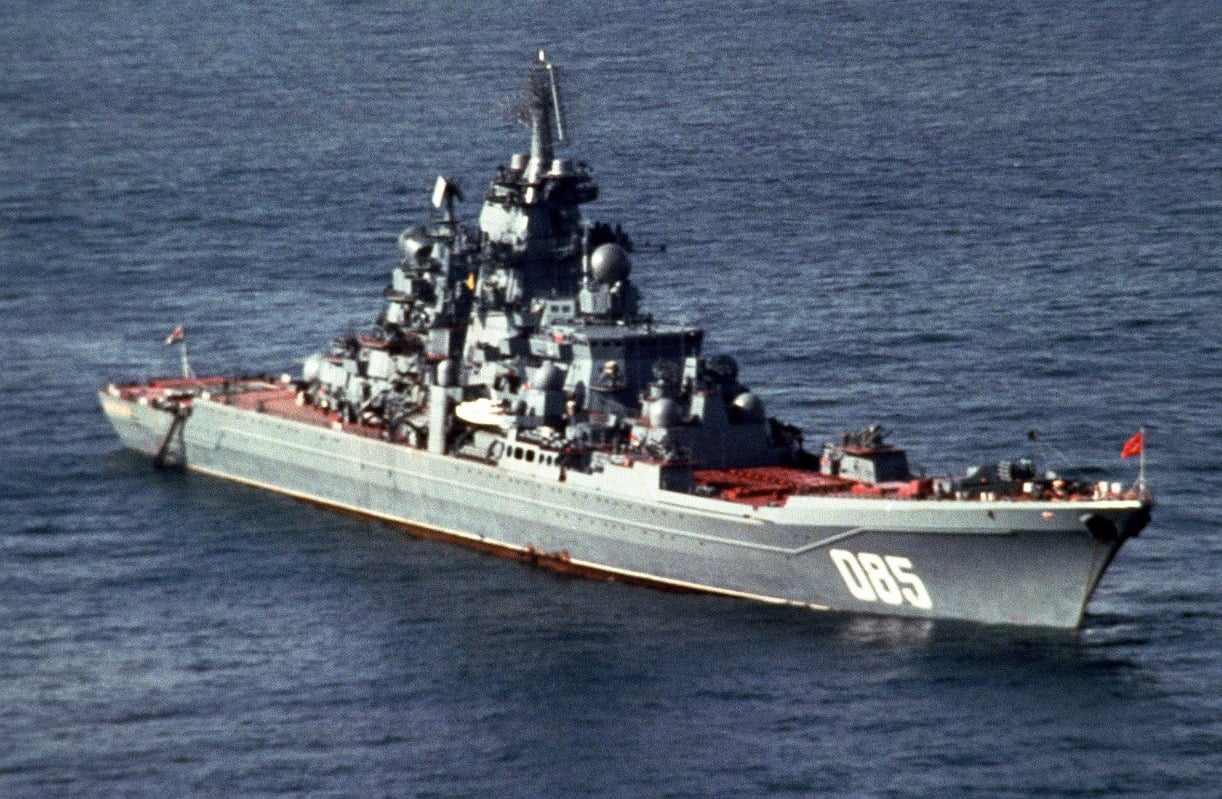Russia’s Kirov battlecruisers could be “sunk” due to the Ukraine war

Summary and key points: Russia’s ongoing invasion of Ukraine has depleted its resources and may lead to a downsizing of its fleet. The Kirov-class battlecruiser Pyotr Veliky, one of Russia’s two nuclear-powered surface warships, may soon be decommissioned due to high maintenance costs.

– These impressive ships were developed during the Cold War as a counterweight to the US aircraft carriers and are the largest surface combat ships after the aircraft carriers.
– While Admiral Nakhimov, the other surviving Kirov-class cruiser, is expected to return to service soon, Moscow’s financial constraints and the demands of war raise questions about the future of these naval giants.
With each passing day that Russia’s invasion of Ukraine continues, the Kremlin invests vast resources in financing its offensive efforts.
Experts estimate that Moscow has lost more than half of its arsenal of battle tanks, as well as a large amount of ammunition, unmanned aerial vehicles and other military systems.
The Kremlin is hamstrung by severe international sanctions in the ongoing war and is trying to cut costs wherever possible. In April, Russian state-run news portal TASS reported that the Russian battlecruiser Pyotr Veliky could soon be decommissioned, partly because of high maintenance and repair costs.
As one of two nuclear-powered surface warships in the Russian Navy, the Pyotr Veliky plays a significant role. However, with Moscow strapped for cash, it is likely to decommission this massive vessel.
This is a shame, at least for Moscow, because these warships are quite powerful.
Introduction of the Kirov class
The Kirov-class nuclear-powered guided missile cruisers are the second largest ships in the Russian arsenal after the large aircraft carriers.
During the Cold War, the Kirov-class ships were designed as a counterweight to American aircraft carriers. The Baltic Shipyard in Leningrad launched its warship in 1977. Four more ships were built before the collapse of the USSR. The boats were originally named in honor of the heroes of the Bolshevik Revolution, but these names were changed at the same time as the end of the communist state.
Only two battlecruisers survived the collapse of the Soviet Union and the financial problems of the Russian Navy: the Pyotr Veliky and the Admiral Nakhimov.
Both ships are huge and pack a punch. When they were designed during the Cold War, they were primarily intended to be missile cruisers. Over the next decade, however, the Soviets changed course and wanted to use the ships primarily for anti-submarine warfare instead.

As for air-to-air armament, these Kirov-class ships can be equipped with 96 S-300F, 40 4K33 and 192 3K95 short-range surface-to-air missiles, as well as six Ak-630 close-air defense systems.
These battlecruisers were also equipped with various fire control radars, air/surface search radars and hull-mounted sonars.
A defense expert explained this as follows: “The propulsion system was a combination of nuclear power and steam turbine, with two nuclear reactors coupled to two oil-fired boilers that superheated the steam generated in the reactor power plant to increase the power output available at high speed, while at the same time allowing a virtually unlimited range.”
An overview of the two remaining Russian battlecruisers
Both Pyotr Veliky and Admiral Nakhimov were to undergo repairs to improve their performance.
Now, however, reports suggest that only the latter will actually survive this phase.
This decision is the latest in a series of reductions in Russia’s sea-based fleet and was likely influenced by the ongoing war in Ukraine.
These large ships are expensive and Moscow could use the resources allocated to the Pyotr Veliky for its offensive efforts in Kiev.
The Admiral Nakhimov was supposed to be recommissioned just two years after being decommissioned for overhaul in 1997. However, since the early 2000s, this timeframe has been pushed back by a series of delays.
In the last five years alone, Russian officials have claimed that the Admiral Nakhimov will be recommissioned in 2018, 2018 and 2021.
The changed fate of Admiral Nakhimov
According to the latest estimates, the Admiral Nakhimov is expected to be recommissioned in the next two years. Analysts believe that the country’s only remaining Kirov-class cruiser will be deployed to the Northern Fleet in the future.
As the Bulgarian military explains, this move reflects “the Russian Navy’s prioritization of the Arctic region due to its increasing importance as a key trade route and geopolitical battlefield. The Northern Fleet’s positioning also enables the warship to make a significant contribution to Russia’s strategic missile defense.”
While exact details of the Admiral Nakhimov’s conversion remain unclear, industry experts believe the ship will be equipped with the new Russian Tsirkon missiles, which are currently under development. Earlier this year, Putin sent a frigate into the Atlantic with this new generation of hypersonic cruise missiles in tow. According to the Russian Defense Minister, the Tsirkon (or Zicron) is capable of overcoming all missile defense systems and can fly at a speed of Mach 9.0 and reach a range of over 1,000 km.
Although the Admiral Nakhimov’s firepower would make it one of the world’s most powerful surface combat ships, the Kremlin has often exaggerated the true capabilities of its military systems in the past.
This spring, Moscow sent its T-14 Armata tank, a flagship model of the Russian armed forces, to Ukraine. The Kremlin hailed it as the most powerful tank ever to march across the battlefield, but its use in the war was short-lived.

By the summer, Moscow withdrew its Armata tanks from the conflict, although its arsenal was already shrinking. Obviously, the T-14’s performance did not meet the requirements. When the Admiral Nakhimov returns to service with the Russian Navy, only time will tell whether the ship’s stated capabilities are realistic.
About the author: Maya Carlin
Maya Carlin is an analyst at the Center for Security Policy and a former Anna Sobol Levy Fellow at IDC Herzliya in Israel. She has been featured in numerous publications, including The National Interest, Jerusalem Post, and Times of Israel. You can follow her on Twitter: @MayaCarlin.
All images are Creative Commons or Shutterstock.
From the safe
Russia has freaked out: Why the US Navy took the Iowa-class battleships out of service
Battleship vs Battlecruiser: Iowa-class vs Russian Kirov-class (Who Wins?)



